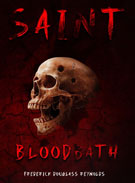
 |
The brutal murder of five members of a homeless encampment sets in motion Reynolds’ startling true crime account. Broken into eleven parts, Reynolds’ book portrays the convoluted and chilling case of the Quintuple, or “Homeless massacre,” that intensely impacts the lives of diverse individuals in southern California. Reynolds, who lived not far from where these murders took place, begins with the men and women living in the homeless camp. These individuals deal with their own struggles and addictions, dependent on any means for survival. One owes money to a nefarious gang member, which is the catalyst that leads to these murders. After these murders occur, Reynolds switches gears, plunging the reader deep into the complex inner workings of a homicide investigation. Readers closely follow the detectives and police in separate but related cases as they wade through the carnage amidst the slow wheels of justice to piece together a tangled puzzle. For relief, they lean upon welcome discussions of sports, gallows humor, or the comforts of home to maintain composure and withstand their arduous profession.
Employing a rather creative approach, Reynolds writes the book as a first-rate whodunit centered on key events taking place primarily around 2008 and 2009. The author is adept at creating atmosphere and paints a brooding landscape of Long Beach, California, which is not without its own notoriety of serial killers. Reynolds depicts a world where criminals and law enforcement exist in tandem, caught up together in an unending dance of depravity and honor. At times the narrative gets mired by extraneous dialogue, and it’s hard to know if the realistic dialects of broken English or slang add authenticity or inadvertently slow the pace of the book. Much of the book is devoted heavily to the investigation surrounding the murders, which is fascinating in its own right. But it isn’t until the discovery of a severed hand one hundred miles away that the narrative really kicks off as Reynolds explores the nitty-gritty details of these murders and the ultimate trial of its lead suspect. Arguably, the most haunting and best part of the book is when readers meet and become embroiled in the life of the beguiling villain and perpetrator of the story. Here, Reynolds gets up close and personal, uncomfortably so, with this former gang member whose street name lends to the book’s title. He is a violent man, “beholden to his life of crime,” and plagued by demons. It’s no easy task to forget this particular individual long after the book ends.
Reynolds is a competent writer, drawing upon his own experiences and background both in crime and law enforcement. This dual understanding affords Reynolds the insight and conviction to write such a story as this one. He captures the complexities of people on both sides of the law, displaying compassion for the victims and the detectives who advocate for them in the pursuit of justice while respectfully acknowledging the barriers of those trapped and unable to escape a life of crime. Reynolds weaves moments of beauty and horror into the narrative, accentuating the people and landscape he writes about, such as the majestic LA skyline that shrouds the “five hundred murders” of the city each year, the vultures who perch upon trees overseeing animal skulls and crawling rattlesnakes, and the descriptively gut-churning details of the sights, smells, and sounds as a sergeant stands amid active autopsies. Reynolds also laces his book with a sense of ominousness, relying on motifs of the continual presence of crows or the number 666 to heighten the fear and mythology. His book is part police procedural focused on the grueling nuances of investigating vicious homicides and part commentary on gang warfare, racism, drugs, crime, and the plight of homelessness in America. In short, Reynolds crafts an altogether cinematic, compulsively readable tale, writing with the raw intensity and ease of any crime fiction novelist at the top of his game.